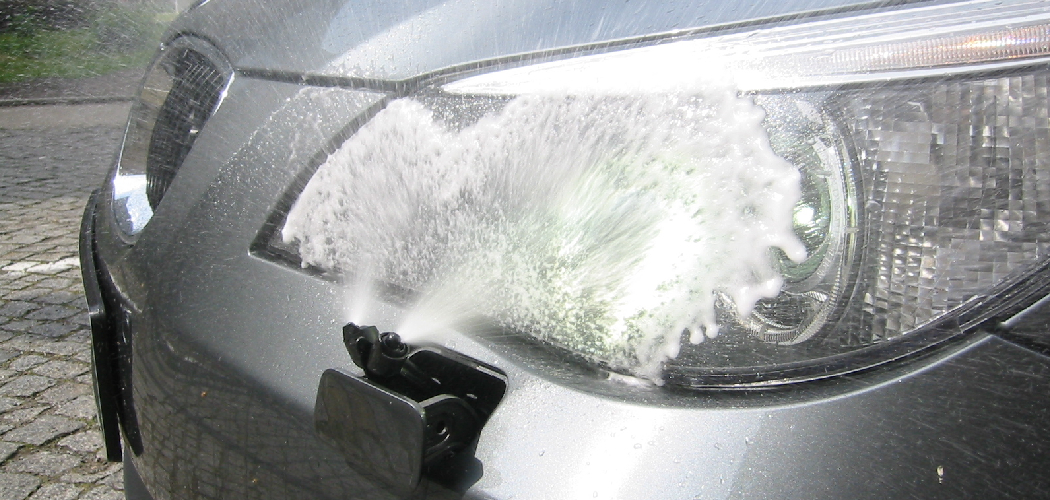The first thing many notice when driving at night is how dirty and obscured their headlights become. A layer of grime, bugs, and other debris builds up quickly on the front of your vehicle, making it harder to see the road ahead clearly. While you can try cleaning your headlights manually, using a headlight washer system is far more convenient.
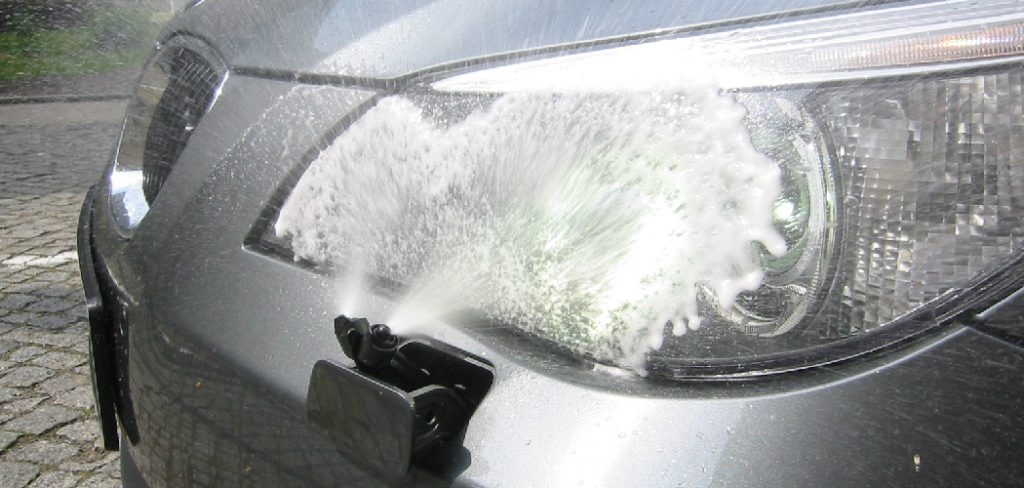
With just a push of a button, your headlights will be instantly cleaned and restored to their optimal brightness. For many drivers, a headlight washer is an invaluable safety feature that helps improve visibility in low-light conditions.
In this blog post, I’ll show you how to use headlight washer on your vehicle so you can always have crystal-clear illumination no matter what you encounter on the road.
What Will You Need?
Before diving into the steps for using a headlight washer, let’s ensure you have all the necessary materials. Here’s what you’ll need:
- A vehicle equipped with a headlight washer system
- Clean water in the windshield wiper fluid reservoir
- A functioning headlight washer button or lever on your dashboard or steering column
Once you have these items, you can start using your headlight washer system.
10 Easy Steps on How to Use Headlight Washer
Step 1. Start Your Engine:
To activate the headlight washer, your vehicle’s engine must be running. This ensures enough power to generate the necessary pressure for cleaning. If you try to use the headlight washer with the engine off, it will not work.
Step 2. Locate the Headlight Washer Control:
The headlight washer control is typically found on the dashboard or steering column of your vehicle, often in close proximity to the rules for your regular windshield wipers. It may be labeled with a symbol that resembles a spraying water nozzle directed at a headlight. Once you have identified this control, you can proceed to the next step.
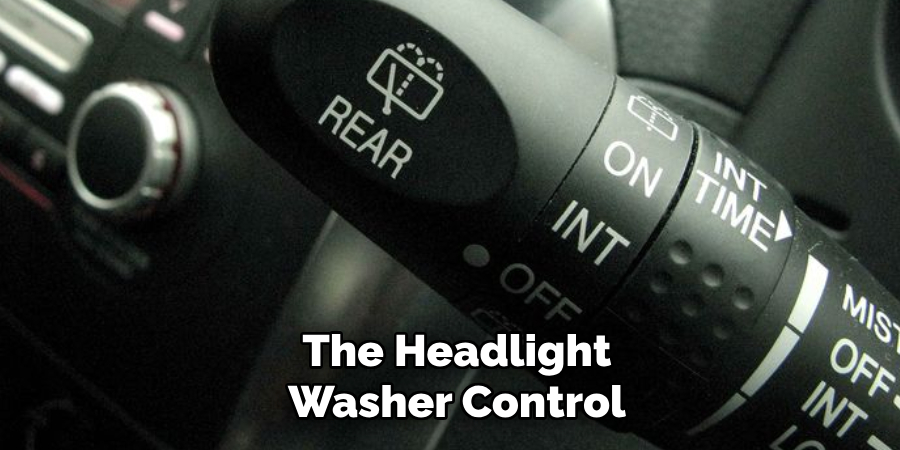
Step 3. Activate the Headlight Washer:
Press or pull the headlight washer control. This action will trigger the washer pump, causing a solid stream of water to be sprayed onto your vehicle’s headlights. The washer system uses high pressure to effectively clear away dirt and debris, restoring clear visibility in seconds. Ensure you release the control after a few seconds to avoid overuse of the washer fluid.
Step 4. Assess the Headlights:
After activating the headlight washer, it’s essential to assess whether the headlights are sufficiently clean. Step out of your vehicle and inspect the headlights. If there is still grime or debris, you may need to activate the headlight washer again. Remember, the aim is to have clear, bright headlights for optimal driving visibility.
Step 5. Manual Cleaning if Needed:
If the headlight washer system does not altogether remove the dirt and grime after several attempts, it may be necessary to clean the headlights manually. This can be done using a soft, damp cloth and a mild detergent. Be sure to wipe gently to avoid scratching the headlight lens. After cleaning, rinse thoroughly with clean water and dry with a soft towel. This should restore your headlights to their optimal brightness.
Step 6. Regular Maintenance:
Maintaining your headlight washer system is critical to ensuring its longevity and effectiveness. Regularly check the washer fluid level in the reservoir and refill it as needed. Also, inspect the washer nozzles for any blockage or damage. If any malfunctions are noticed, get them repaired by a professional. Keeping your headlight washer system in good condition guarantees clear and bright headlights, regardless of the weather or road conditions.
Step 7. Check Functionality Periodically:
It’s essential to regularly test the functionality of your headlight washer system to ensure it’s working optimally. This can be done by activating the system and observing its operation. If the spray is too weak or concentrated in just one area, it may indicate an issue with the washer pump or nozzle alignment. In such cases, seeking professional help for proper adjustment or repair is advisable.
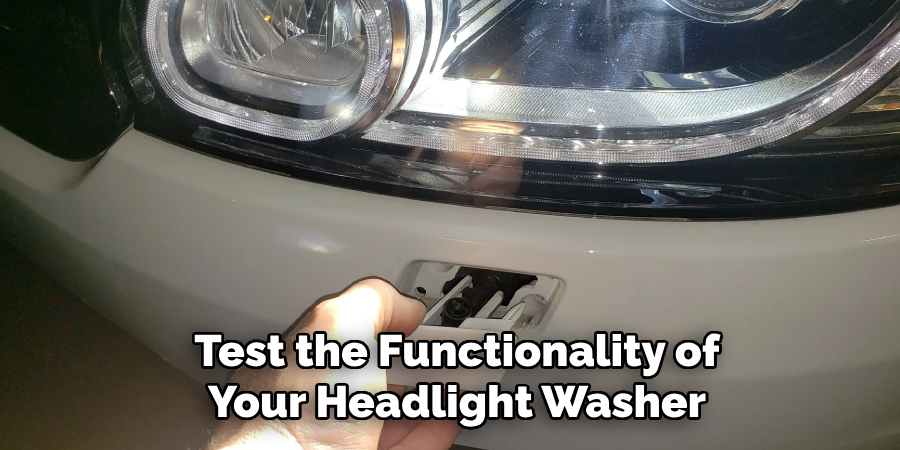
Step 8. Use Only When Needed:
Remember, the headlight washer system should ideally be used only when necessary. Regular or excessive use can lead to faster depletion of the washer fluid and potential wear and tear of the system. Therefore, use it judiciously, typically when driving in conditions that result in a build-up of grime or dirt on your headlights that impairs visibility.
This could be after a long drive on a muddy road or in harsh weather conditions like snow or heavy rain. By using the system only when needed, you can ensure its longevity and maintain optimal visibility at all times.
Step 9. Do Not Use When Frozen:
Avoid using the headlight washer system in freezing conditions, as the washer fluid could freeze on the headlight surface, further obstructing visibility. If the car has been parked in freezing conditions, it’s advisable to manually clean the headlights or wait for the vehicle to heat up before using the headlight washer system. It’s always important to consider the weather conditions when using the headlight washer to ensure you’re not inadvertently creating a safety hazard.
Step 10. Understand the Limitations:
Finally, it’s crucial to understand that a headlight washer system is not a magic solution to all headlight visibility problems. It’s excellent for removing dirt and grime that accumulates on the surface but can’t fix internal issues like fogging or electrical faults in the bulbs.
For such problems, professional assistance may be required. While the headlight washer is a valuable tool to enhance visibility, it should be used with regular manual cleaning and inspections to ensure your headlights are always at their best.
Following these ten steps, you can effectively use your headlight washer system to maintain clear and bright headlights for optimal driving visibility.
5 Additional Tips and Tricks
Tip 1: Use Quality Washer Fluid:
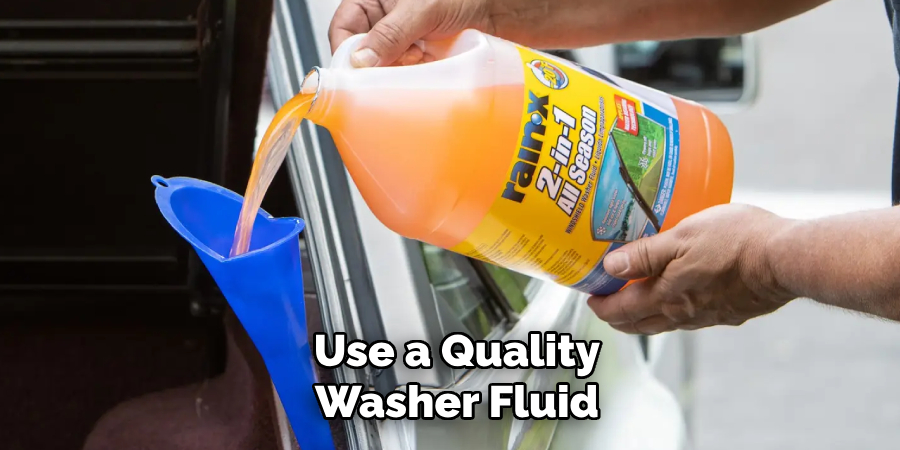
Always ensure you use a quality washer fluid for your headlight washer system. A suitable quality fluid will have better cleaning properties, resist freezing, and be less likely to leave streaks on your headlights.
Tip 2: Avoid Direct Sunlight:
Avoid using the headlight washer system in direct sunlight, especially during hot weather. The reason is that the washer fluid could evaporate before it properly cleans the headlights. Moreover, the rapid drying could leave streaks or spots on the headlights.
Tip 3: Use Distilled Water:
If you’re refilling the washer fluid reservoir with water, use distilled water. Regular tap water contains minerals and impurities that can clog the washer nozzles or cause damage to the system over time.
Tip 4: Keep Washer Nozzles Clean:
Regularly clean the washer nozzles to avoid clogging with dirt or debris. Use a small pin or toothpick to clear any blockages in the nozzle holes gently. This will ensure a steady and even spray of washer fluid onto the headlights.
Tip 5: Check Hose Connections:
Periodically check the connections between the hose and nozzles to ensure they’re secure. Loose connections can cause leaks, resulting in depleted washer fluid and reduced system effectiveness.
With these additional tips and tricks, you can get the most out of your headlight washer system and ensure clear visibility while driving.
5 Things You Should Avoid
Avoid 1: Using Household Cleaning Solutions: Avoid using household cleaning solutions as a substitute for washer fluid. These can damage the headlight surface and the inner workings of the washer system.
Avoid 2: Ignoring Low Fluid Indicator: Do not ignore the low fluid indicator. If the washer fluid level in the reservoir is low, it may be unable to clean the headlights effectively. Refill the pool as soon as possible to ensure proper functionality.
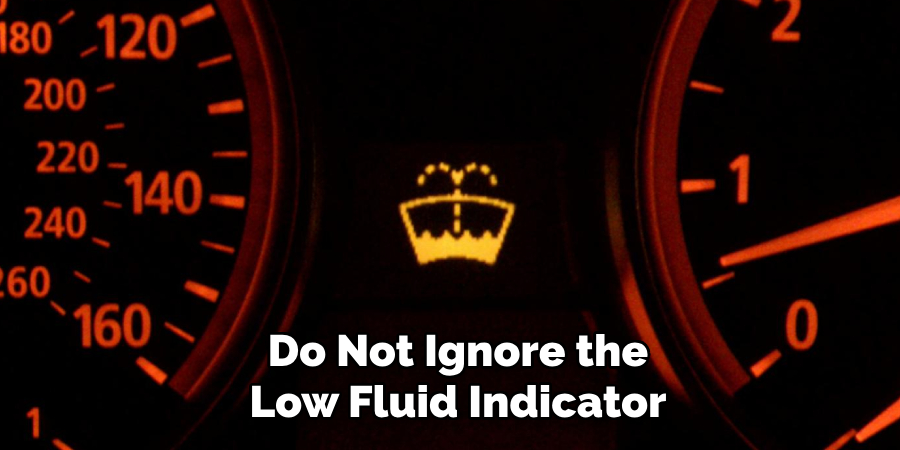
Avoid 3: Neglecting Regular Maintenance: Avoid neglecting regular maintenance checks of the headlight washer system. A well-maintained system ensures optimal performance and longevity.
Avoid 4: Forced Activation in Freezing Conditions: Do not force a headlight washer system to operate in freezing conditions. The washer fluid could freeze on the headlight surface, further impairing visibility.
Avoid 5: Using the System Unnecessarily: Avoid using the system when unnecessary. Excessive usage can lead to a faster depletion of the washer fluid and potential wear and tear of the system. Use the system judiciously to maintain its longevity.
By avoiding these five things, you can ensure your headlight washer system’s proper functioning and longevity.
Conclusion
In conclusion, headlight washers should be more noticed and considered in vehicle maintenance. However, as discussed in this blog post, they can be crucial for maintaining optimal visibility while driving.
By following the steps outlined on how to use headlight washer, you can prevent any dirt or grime buildup on your headlights, ensuring that your vehicle is always safe and road-worthy. Plus, let’s remember the added benefit of keeping your car looking clean and shiny! So, next time you’re getting your car washed or going for a long drive, remember to utilize your headlight washers and give them the attention they deserve.
And if you don’t have them yet, consider adding this feature to your vehicle for extra convenience. Trust us, once you start using headlight washers regularly, you’ll wonder how you got by without them!

